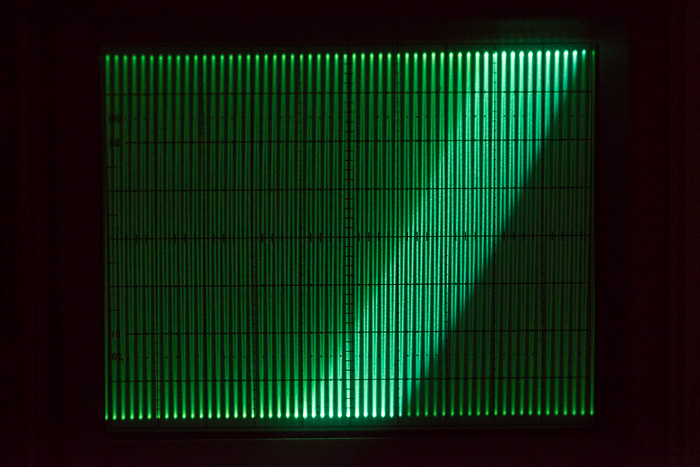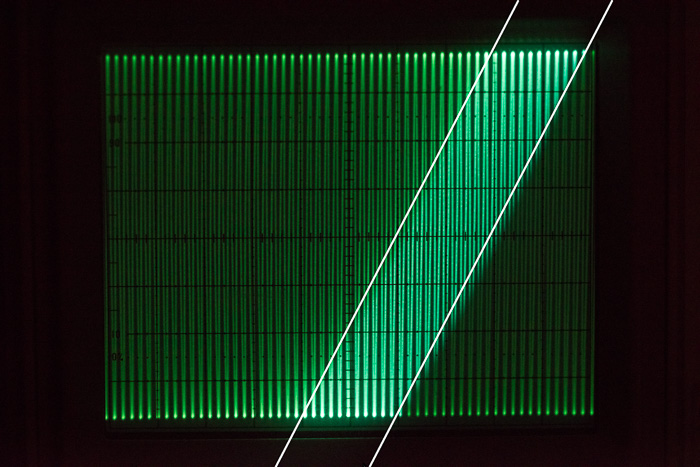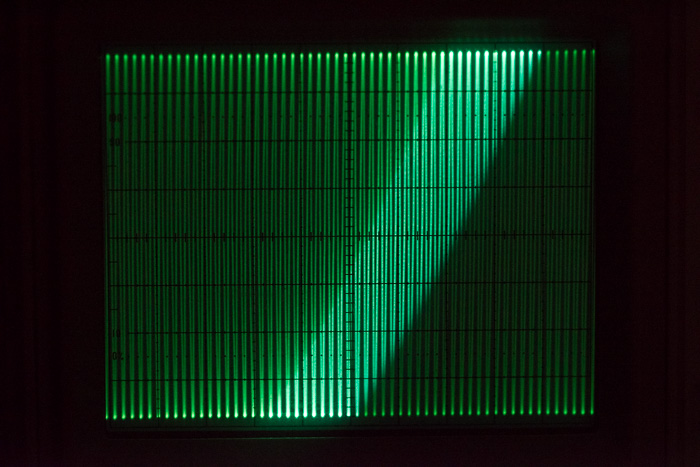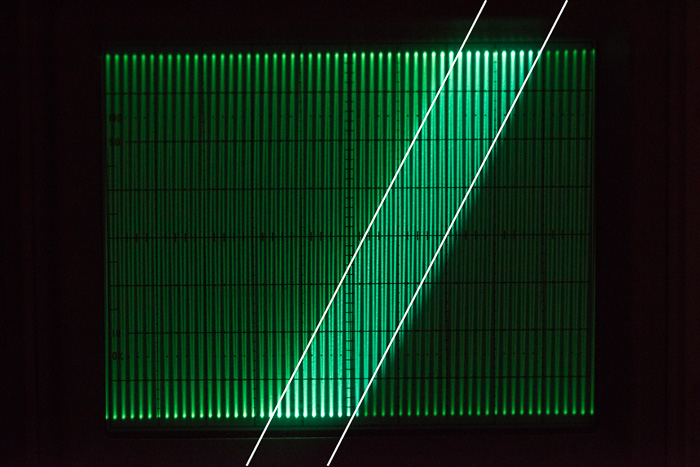Before I get to how the electronic first curtain shutter (EFCS) on the D810 works, it will be instructive to look at how the all-mechanical focal plane shutter operates.
Here’s a photograph of an analog oscilloscope with the time base set to 0,5 milliseconds/division. EFCS was disabled, and the shutter speed was 1/1000 second:
The apparent advancing of the exposure at the bottom and the top of the image is due to the interaction of finite phosphor decay and the sinusoidal input signal, which excites the phosphors more at the upper and lower parts of the wave, where it is moving more slowly.
You can see that the shutter moves in the opposite direction from the shutter in a Sony alpha 7 camera: from the bottom to the top of the image, or from the top to the bottom of the camera. The fastest strobe synch speed for the D810 is 1/320 second, or 3.1 milliseconds (ms), so you’d think that the curtains would take about that long to travel across the sensor.
You’d be wrong.
How far wrong? Let’s put some construction lines on the image:
It looks like the shutter takes about 5 divisions, or 2.5 milliseconds, to complete its trip across the chip. Nikon must need the other 0.4 milliseconds for something. To allow for unknown delay in the strobe firing circuitry? To allow for radio or optical triggers? Who knows, but it’s there.
Note the time the shutter is open at any point on the image. Two divisions or a bit less, or one millisecond.
Another thing to notice is both curtains of the shutter appears to move at a fairly constant speed: the lines are straight. That will make it easier to design an electronic first curtain.
Now let’s look at the same setup with EFCS on:
Looks pretty similar, doesn’t it? Here it is with the construction lines:
We can see that the EFCS faithfully reproduces the effect on the sensor of the mechanical first curtain, as the reset signal that creates the electronic first curtain travels from the bottom to the top of the image in about the same amount of time as its mechanical cousin.




Hi Jim
Just wanted to say that your method of displaying the rolling shutter operation is ingenious. You mention apparent advancing of exposure due to finite phosphor decay on the screen – presumably finite phosphor decay is also the reason you can see the parts of the trace (at a reduced level) that are not actually being excited during the shutter open window ?
Dave